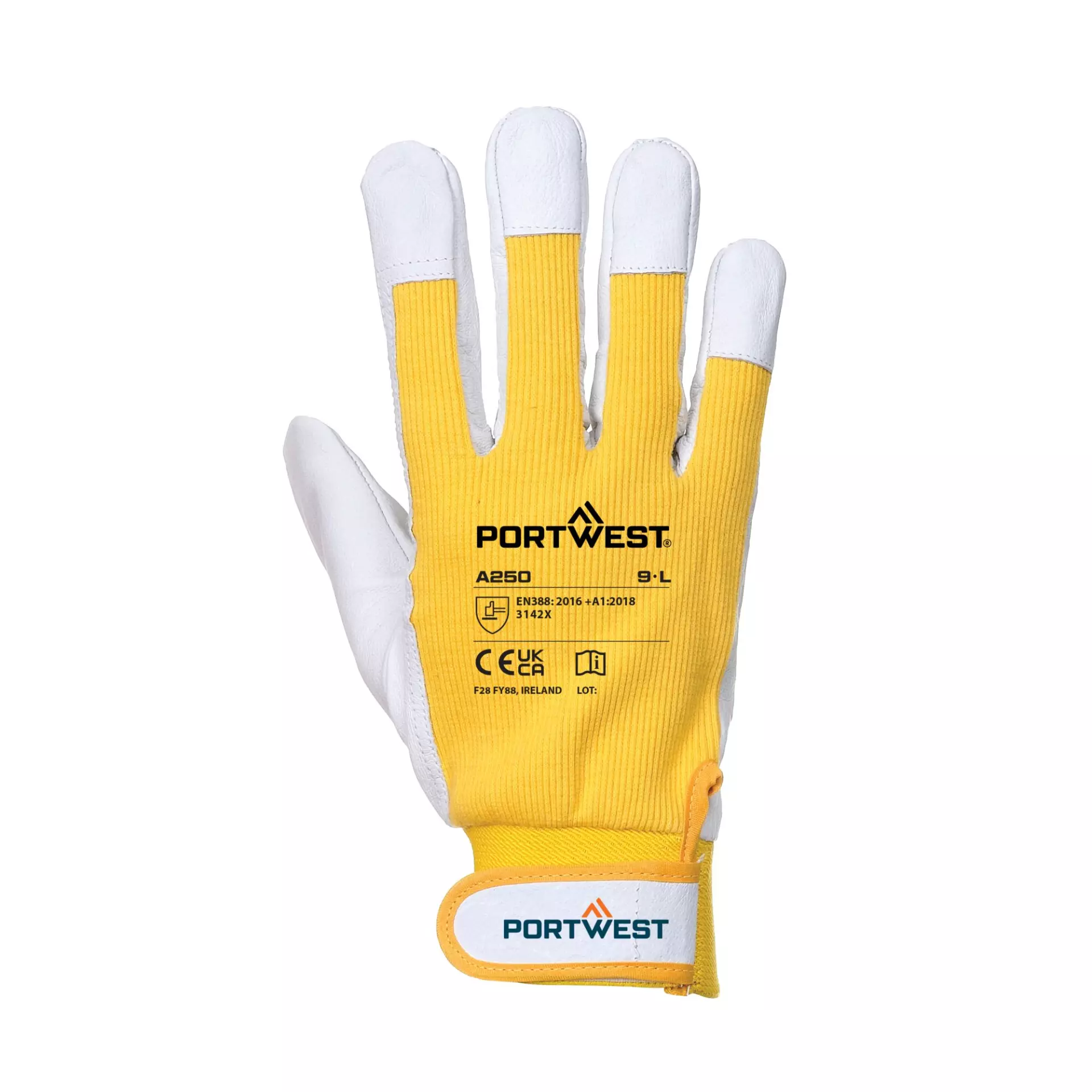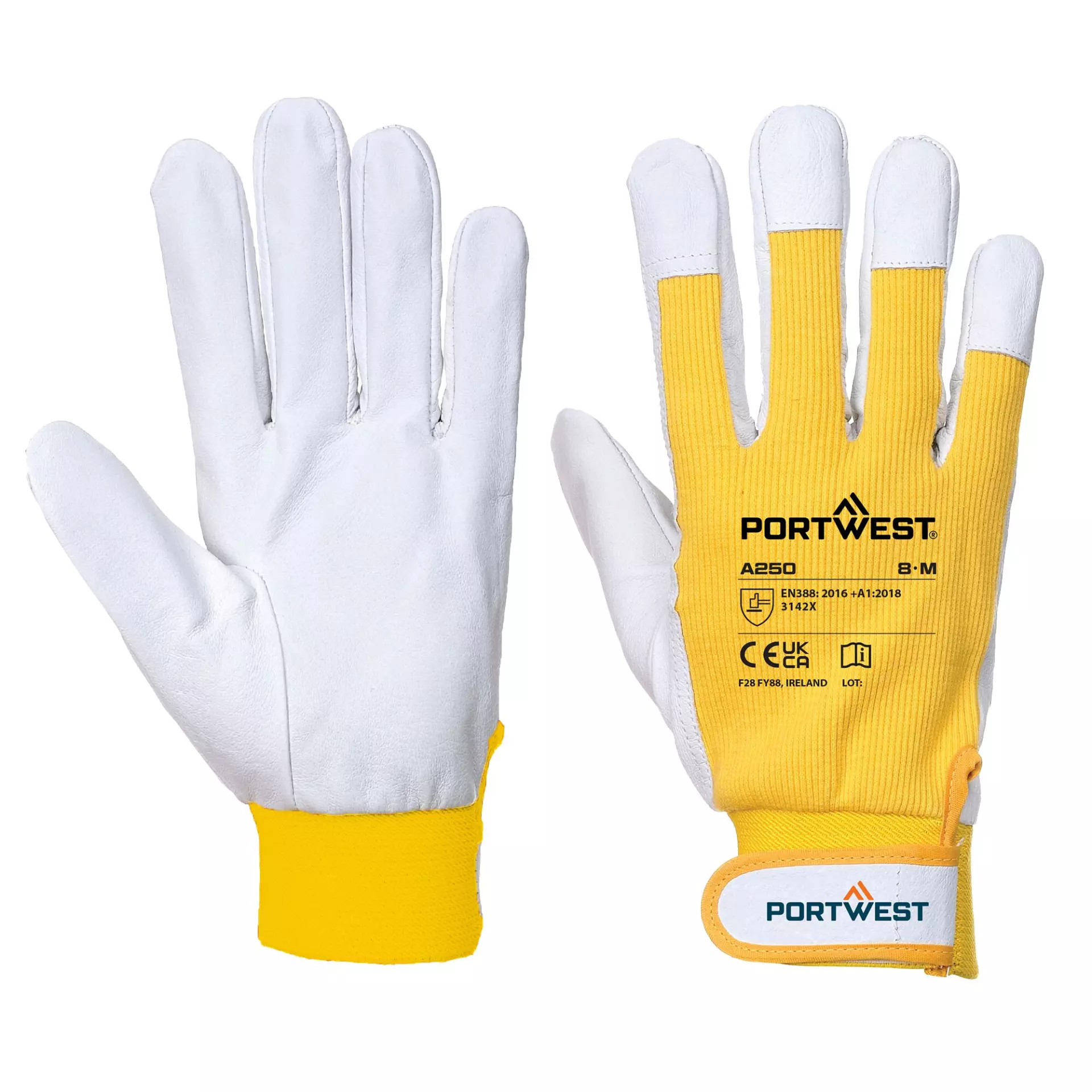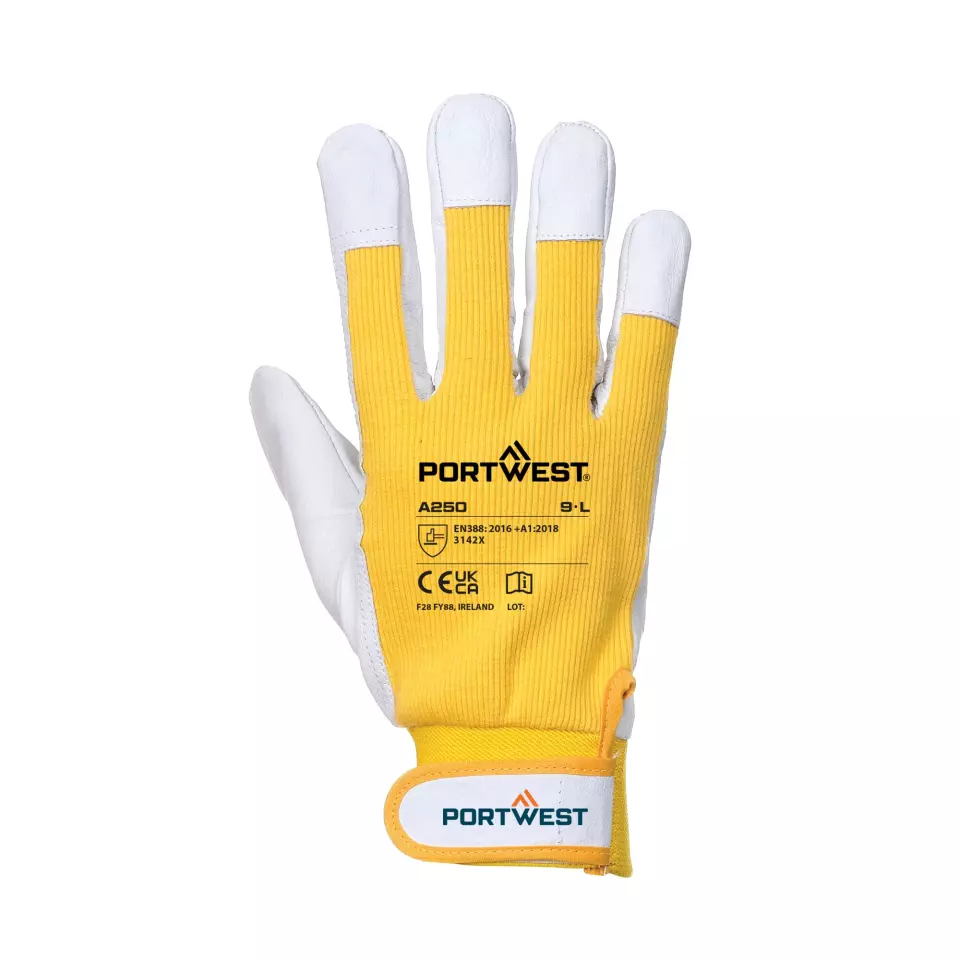

Features You'll Love

EN 388 · Puncture Resistance Level 2, Abrasion Resistance Level 3, Tear Resistance Level 4
Withstands moderate force from sharp objects like heavy-duty splinters or wires.
Provides good resistance against scraping, scratching, and rubbing on rough or abrasive surfaces.
Offers the highest level of protection against tearing, withstanding a strong force before ripping.
Portwest
Tergsus Glove, Size L, Yellow, 12 pairs
Tergsus Glove, Size L, Yellow, 12 pairs
4.6 / 5
44,25 €
Price per 12 pairs
3,69 € / pair
Choose size
Shipping fee is 7,95 € for orders under 80,00 €
Features You'll Love

EN 388 · Puncture Resistance Level 2, Abrasion Resistance Level 3, Tear Resistance Level 4
Withstands moderate force from sharp objects like heavy-duty splinters or wires.
Provides good resistance against scraping, scratching, and rubbing on rough or abrasive surfaces.
Offers the highest level of protection against tearing, withstanding a strong force before ripping.
Product description
Professional mechanical protection glove constructed from durable goat grain leather with cotton backing for enhanced breathability and comfort. Features hook and loop fastening system for secure fit and reinforced panels in high-wear areas to maximize durability. CE certified and tested to EN 388:2016+A1:2018 standards with 3142X performance ratings for mechanical risks.
Product Features:
- High quality durable goat leather construction
- Cotton backing for breathability
- Hook and loop strap for secure fit
- Reinforced panels in high wear areas
- Reinforced fingertips for enhanced durability
Recommended Applications:
- Light industrial applications
Standards:
- CE certified
- EN ISO 21420:2020
- EN 388:2016+A1:2018 (3142X)
- SGS FIMKO Ltd certified